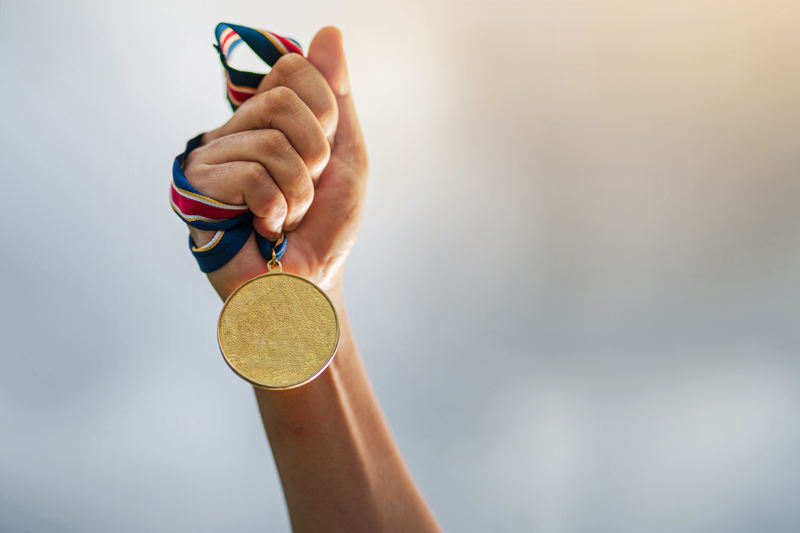
By Robert Gandley on Sep 16, 2021

The Olympic flame was lit once again on July 23 with the side benefit of presenting marketers & advertisers alike with a viral masterclass. International visitors were not invited this year, and many restrictions affected the Olympic Games’ traditions for the athletes, event organizers and everyone who witnessed or took part.
This article concerns the nitty-gritty behind the marketing of the Tokyo Olympics. Take note of our lessons learned and consider using them in your own company’s campaigns whether you do it yourself or use digital marketing services from an agency.
While the traditional marketing approach to Olympic events has been boomer-centric, research from Zeitgeist suggests that a paradigm shift in demographics has taken place. This year saw a new audience of millennials rush to view the Games.
Previous data revealed that Millennials were the most likely age group to be looking forward to viewing the Olympic Games. Tuning in from an array of different channels including YouTube, traditional television and mobile livestream.
As it turned out, the generational breakdown of who watched a significant amount of the Olympics is as follows:
Why this is important: The small percentage of Baby Boomers who watched the Olympics is noteworthy. Usually, they are a reliable audience for the Games. Marketers should take note that subsequent sporting events may follow the Tokyo Olympics, in this statistical trend. That means that sports brands and event organizers may want to increase their focus on Millennials.
The Olympic Games’ head of marketing & digital engagement, Christopher Carroll, decided to construct marketing messages this year that were more human-centric. The purpose was not only to garner some meaningful attention, but to attempt creation of social connections in the isolation many people feel of dealing with the fallout of COVID-19.
“We needed to talk the talk AND walk the walk when it came to going direct (to people). The public’s consumption (of media) habits have changed greatly, and they will change again in a year, hopefully for the better.”
Carroll used omni-channel marketing techniques for the Olympics, ensuring each campaign engaged directly with fans, closing the parasocial gap between the fan and the athlete. This gap-closer was evident in the giant workout video with Olympic athletes from around the world, sparking an immense wave of social proof and engagement for the Games as a whole.
Packed with juicy content bites and an email marketing campaign to boot for form opt-ins, the workout event lasted a full 24 hours and data collection was fueled by a smooth landing page where visiting Internet users could find out more about their favorite athletes.
Content amplification was deployed using the power of hashtags: #Olympicday and #stayactive reinforced the 24-hour campaign, allowing it to spread like wildfire.
Why this is important: When your entire audience is going through a global pandemic, it’s crucial that you develop marketing strategies that envelop them in the action. For all brands and companies that want to achieve a similar effect, ensure your campaigns are fueled by social proof, engagement and user-generated content instead of a handful of static ads that people see and skip.
This direct approach to marketing has doubtless encouraged engagement of fans by placing them closer to the heart of the Games while not forgetting the sheer size and excitement of the event. Ultimately, the IOC’s mission of thinking globally but acting locally heavily influenced the D2C flavor of this year’s campaign. A good agency the provides digital marketing services takes all this into account.
Another takeaway from the Tokyo Olympic marketing strategy is that video-based content is gold and has no signs of slowing down. Video-sharing and social platform hybrid TikTok, for instance, launched its very own platform-based workout videos with the Olympic team for Great Britain, creating content using the #teamgbgames hashtag.
What ensued was a flurry of user-generated content pieces that could be repurposed, spotlighted and shared by fans around the world, causing a domino effect for more millennials and Generation Z platform users to engage with the Olympics further. Naturally, for platforms like Tik Tok, riding the wave of these hashtag events were heavily popular influencers, bolstering the cause even further: Ben Nuttall, for example, wowed his audiences of thousands with a kick-up challenge for Olympic football fans.
Why this is important: Harking back to D2C content, enabling the organic spread of user-generated content (which always feels natural and never forced) allows for a greater reach on a lower budget. Influencer marketing is an incredibly cost-effective outlet for brand recognition, and brands are finding success by leveraging the enormous audiences of well-beloved online celebrities to increase brand awareness (the IOC included).
New data suggests that brands are increasingly taking female athletes seriously and building campaigns to show it. Women comprised 49% of athletes that competed in Tokyo this year, a dramatic increase from the past. Women won 58.4% of the medals for the USA Team and were the focus of nearly 60% of NBC’s primetime coverage of the Olympic Games.
Recent data overwhelmingly disproves the long-held argument that brands should invest in men’s sports exclusively on the flawed premise that the audience size and viewership is male-dominant. An undeniable opportunity exists in the women’s sports advertising space. The data that a younger demographic is following the Games paired with the knowledge that a large portion of that viewership is female is ammunition for brands to create marketing campaigns that don’t just resonate with few, but all.
Why this is important: Brands should focus on creating an emotional connection to the athletes they sponsor. And by leaning into real and current issues like gender inequality and over-sexualization of women in sport, brands can build a strong connection with the growing fanbase and leverage a new audience to sustain their marketing campaigns.
Marketing lesson: Stay as native as possible to your platform. Facebook released an incredible longboarding-related campaign that used video with simple messaging pop-ups to show people connecting over the sport.
Marketing lesson: For Instagram, ensure that you’re staying clear of boring visuals. User-generated content, smiling faces and plenty of colors work best.
Marketing lesson: For Twitter, more informative and sophisticated advertisements work best.
Marketing lesson: if you’re riding the wave of a popular event, be sure to involve your product somehow. Omega’s clever campaign saw the brand’s products being used alongside athletic performances to celebrate split precision interspersed with stunning visuals Japanese cultural icons.
Marketing lesson: Gain attention and goodwill by using your campaigns to raise awareness for meaningful topics.
Best Day Ever by Nike was a charmingly busy video advertisement referencing an array of important subjects: mental health, determination, racial equality and gender discrimination. Remember, if you want to connect with your audience, dive deep to find out what’s making them tick. What causes are on their minds?
Did you have a favorite advertising campaign from one of your beloved brands? Brainstorm what they did well, what they could have done better, and move forward with your new and refreshed pallet of marketing ideas. Consider a digital advertising agency if you are not ready to take this on yourself. Umbrella Local can help you with these and other digital marketing services.
Use our free tool to get your score calculated in under 60 seconds.